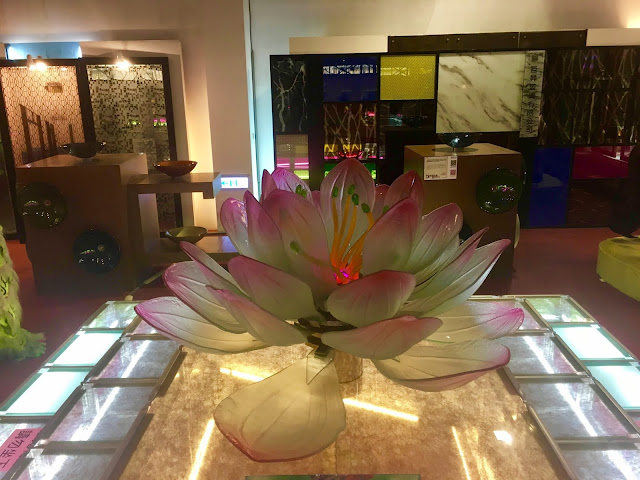Hsinchu is known as the center of Taiwanese glass and has a history of over 100 years in glass art. Taiwanese glass art began in Taipei in 1887, using hand-blown glass techniques. However, the glass industry in Hsinchu didn't start until 1920, initially focusing on wine bottle production. The first glass factory in Hsinchu was opened in 1925, specializing in the production of candle lids, fly-catching lamps, medicine bottles, traffic lights, thermometers, and similar items. With the establishment of several companies, Hsinchu became an important city for Taiwanese glass.
In response to increasing market demands, more than 30 glass manufacturers were established in just a few years. The glass craft department was opened in 1960, enabling artists to create glass vases and various decorative glass items such as flowers and fruits. This also opened up opportunities for the trading of Taiwanese glass, leading to the establishment of many glass craft factories.
The Glass Museum in Hsinchu was opened in 1999, but since it was closed for renovation, we visited another place, the Lukang Glass Gallery. I have previously mentioned the Glass Mazu Temple, which was built by artists from the Glass Gallery. This temple serves as a showcase of glass art.
The Lukang Glass Gallery is definitely worth visiting. Spanning two floors, the gallery is filled with beautiful glass art. On the first floor, you'll also find shops (not only selling glass) and a DIY course. The entrance is free, and there is ample parking space. The gallery is open every day from 8am to 6.30pm. We arrived before closing time, so there weren't many people, and we could freely explore the gallery.
The Glass Gallery in Lukang is a major tourist destination in Changhua, with up to 10,000 visitors daily. One of their remarkable exhibitions is the Golden Tunnel, constructed using 3,600 glass mirrors. This spectacular 72-meter-long glass tunnel requires visitors to wear slippers and walk softly.
The most amazing glass art in the gallery is the Temple, situated between two of the gallery buildings. The glass art created here is highly realistic, featuring butterflies, bugs, flowers, and other plants. One of the remarkable artworks is a lotus pond with a glass bridge that visitors can walk through. Additionally, there are miniatures of temples made of wood with glass decorations and illuminations, including a scaled-down version of the Taipei 101 building.
See also: Glass Mazu Temple
















0 komentarze:
Post a Comment